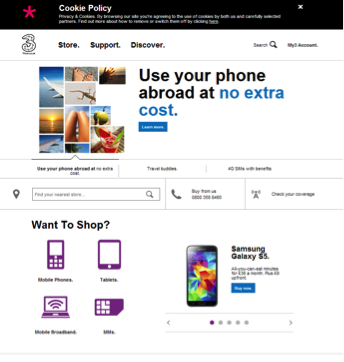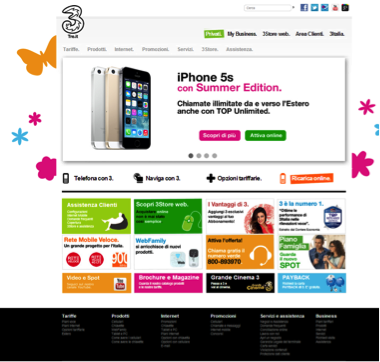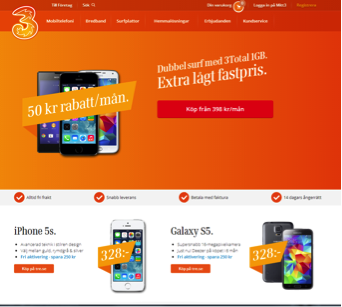Global brands still have local audiences, so how do we balance the demands of localization with the need for consistency in our content? We look at where and how to localize without losing your brand, your voice, or your customers.
Today, more people speak and read English as a second language than as a first. From Nigeria to South America, English is spoken and understood at work, in casual conversation, and online. And in every context where English is spoken, it develops its own idiosyncrasies and local characteristics.
Writing in The Guardian, Juliane House reflects, “English is already ‘de-nativized’ to a large extent: the global number of non-native speakers is now substantially larger than its native speakers (about 4:1) … we can no longer say that English is one monolithic, ‘hegemonic’ voice, it is a diversity of different voices.”
Together, these voices make up a multi-faceted lingua franca that connects the globe.
Any English-language business with international reach must communicate effectively with non-native English speakers. Your English copy needs to work hard to reach users at every conceivable proficiency level, from word-perfect speakers to people with a few phrases who fill in the blanks using Google Translate.
And that doesn’t just mean being clear and readable (although these points are crucial). It also needs to clear local hurdles like figures of speech, cultural references, taboos, and varying levels of formality. To be really effective, marketers must create English copy for international markets that is on brand, in the right tone of voice and aimed at the right audiences.
It’s a challenge to create consistent, high-quality international copy in the real world. This goes double if your products, positioning, and service levels differ in every territory, or your subject matter is specialist and needs detailed explanation.
Localization: Too Much of a Good Thing?
Localizing content is essential. It helps make our meaning clear, connects us with our audiences, and helps us avoid pitfalls of cultural nuance. (Pepsi’s infamous mistranslation of its slogan “Come alive with Pepsi,” telling Chinese customers that the fizzy pop can bring dead ancestors back, has passed into marketing folklore.) Many businesses tailor their products or services to each local market, reflecting what local competitors offer and the appetites of local consumers. Take McDonalds’ local menus, for example.
Clearly, localization must be part of any global content strategy. But there can be too much of a good thing. You’ve no doubt seen the worst offenders—completely autonomous local sites, each with its own design and IA, one bearing no relation to the next. Too much localization is costly to maintain and, when there’s absolutely no central control, it leaves the core brand open to creative interpretation by local teams.
3 Mobile’s desktop homepage the U.K.
3 Mobile’s desktop homepage in Italy
3 Mobile’s desktop homepage in Denmark
3 Mobile’s desktop homepage in Sweden
Above all, an over-localized site is disorientating for users who click through from a different territory. Abrupt shifts in the tone of the copy make users feel seasick, as do the page structures flitting about or changes to the colour palette.
Producing content in global English doesn’t mean giving every country in the world an identical website. But being too militant about globalizing will leave many of your international users alienated, confused, and turned off.
So What Does ‘Global English’ Look Like?
There are many definitions of global English online, but most agree that globally readable English should have:
- Short, direct sentences
- Short, commonly-used words: the cat sat on the mat, not the feline perched on the shagpile
- Gender-neutral copy (they, their) where grammar allows
- Simple sentence structure (avoid multiple clauses, which can confuse readers)
- No ambiguity or vagueness
- One point per paragraph
- No idioms, slang, metaphors, or complex similes
- No cultural references from particular territories
- Consistency of style—once a user with relatively poor English has looked up and understood the meaning of “United States,” you’re asking them to pick up the dictionary again if you start using “USA” or “America” later on
Of course, you should test the same copy in different markets to understand exactly what works for your audiences across the world, but these principles can provide a strong steer in the right direction.
How Can I Write In The Same Tone Of Voice For Every Market?
Like all localization, this is a balancing act. Every kind of English has its own tics and quirks and its own unique tone. It might be important for your brand to talk to local markets in a voice they find friendly and familiar, but even the definition of what sounds friendly and familiar varies around the world.
Writing good localized content is part skill, part judgement, and part experience
You could find that East Asian markets, for example, prefer very polite language, peppered with “please” and “we kindly request…” whereas in the west such phrases sound uncomfortably formal.
The key to navigating this variety is to have a tone of voice that is flexible. If you have defined a tone of voice that incorporates different tonal values (for example “helpful,” “authoritative,” and “inspiring”), you can use them to adapt your tone depending on context. You might put more emphasis on a tonal value like “Transparent” when you’re writing terms and conditions, rather than “Exciting” or “Inspirational.”
It’s also important to interpret each tonal value according to the territory you’re focusing on. What sounds friendly in one culture could be over-familiar or unprofessional in another. For these kinds of cultural variation and tonal nuance, it’s less a matter of translation and more reinterpretation. You need to go back to the spirit of your brand and tone of voice, and express it appropriately for the culture you’re in. That way, while the words you use will differ, the core values of your brand will still ring true. Done well, this will follow on seamlessly from your market-neutral, global copy.
Start With Your Users
Good localization is part skill, part judgement, and part experience. Some of it you can plan, while some requires an adaptive approach to your business, audience, and international reach. However your content localization plan unfolds, one core principle should guide you: start with your users and focus on communicating your proposition to them as clearly as you can.
The author thanks Rhiannon Jones for her contributions to the creation of this article.
Image of hands holding up “hello” courtesy Shutterstock.











